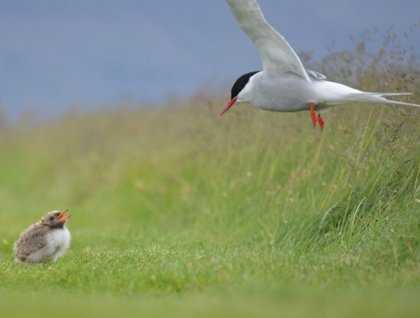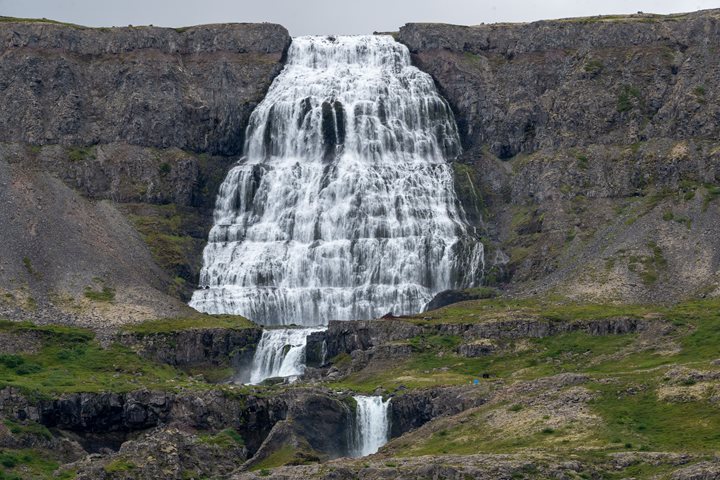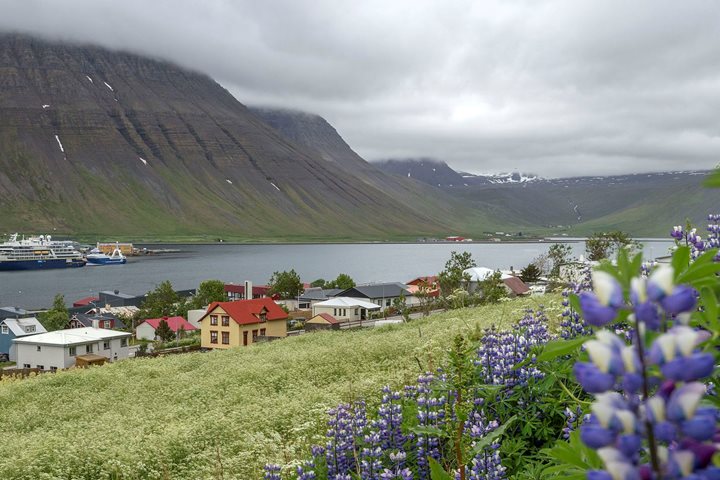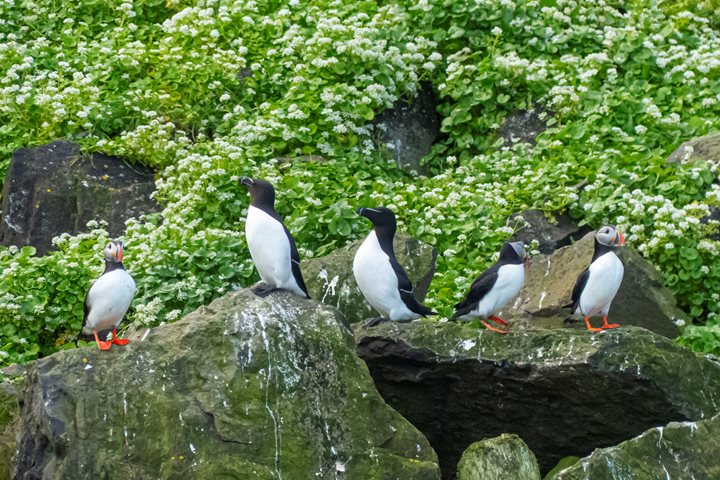Our day begins with Stephanie’s gentle call to breakfast and the announcement that this morning we will be visiting Vigur, a privately-owned island home to thousands of ground-nesting birds including puffins, Arctic terns, eider ducks, and thick-billed murre. The 4-km long island is a farm in Iceland’s northwestern Isafjorden which originally counted sheep, cows, and a family of grain farmers among its residents. Today, the main activity is the collection of valuable eider down, but some historic buildings and an authentic wooden windmill which ground its last grain in 1917, are still standing. After a Zodiac ride to the island, our guide Bjorn tells us a bit about his family’s history on the island, reminds us to stay on the mowed paths so as not to disturb the bird nests, and hands out stick flags with which to deter the diving attacks of Arctic terns protecting their young.
On the short walking tour, we put the stick flags to good use and had many great photo opportunities. Puffins are circling overhead, heading out to sea, and returning with fish. Downy baby terns crawl through the tall grass and meet their parents for feeding. Eider ducks relax along the rocky beaches, happily trading some down from their nests for a safe living space close to their human protectors. The volcanic backdrop is carved into classic hanging U-shaped valleys by glaciers long since gone, and a stiff wind blows steadily from further up in the fjord.
After the walk, Bjorn shows us newly collected eider down and the finished down ready for sale. He compresses some into the size of a golf ball, and when he opens his hand, it quickly puffs up to basketball size. It is amazingly light and fluffy, a perfect insulator. We wrap up our visit with some delicious cakes and coffee in the converted old barn watched by a couple of curious sheep.
During lunch, National Geographic Explorer makes a short trip to Ísafjöđur. Tiny Ísafjöđur is tucked away in a part of Northwest Iceland called the Westfjords. Established by the fishing industry, the town has adapted to technological advances and overfishing by emphasizing quality rather than quantity and by finding innovative ways to use every ounce of fish. Today, tourism is the fastest growing industry in the Westfjords, with Ísafjöđur being Iceland’s third busiest port of call for cruise ships.
We find the town center small in area yet rich with attractions. Travelers enjoy shopping for Icelandic sweaters and local crafts followed by a cozy visit with friends over coffee and pastries. Cafes and restaurants entice travelers with friendly signs and free wi-fi.
The Westfjords Maritime and Heritage Museum is located in a renovated 18th century fish packing plant complete with a second story loading door, chutes and a rail system on which huge hoppers of fresh-caught fish travelled. The all-wooden historical site houses both artifacts from the fishing industry and a large collection of accordions! Who knew Icelanders had such passion for accordion music?
We wrap up the day with our final recap which includes a preview of Sarah’s wonderful video chronicle of our expedition. Tomorrow will be our last full day on the ship, and we are excited to spend it exploring the west coast of Iceland as we make our way back to Reykjavik.






